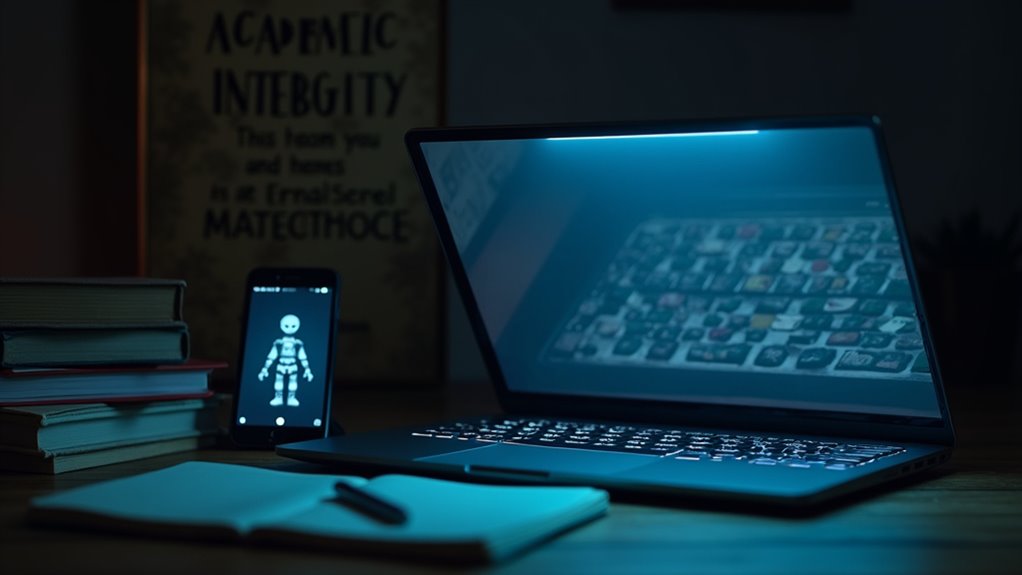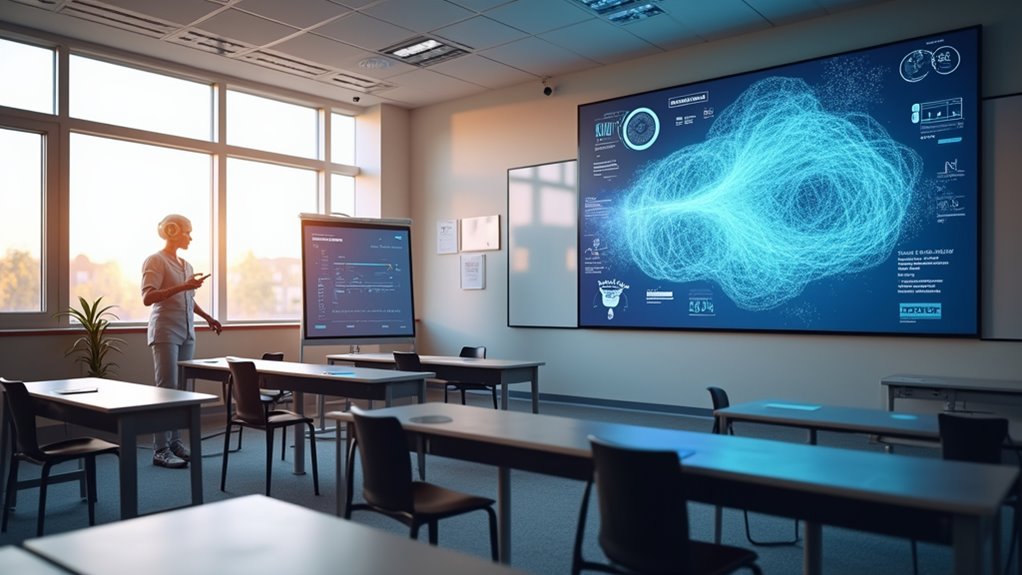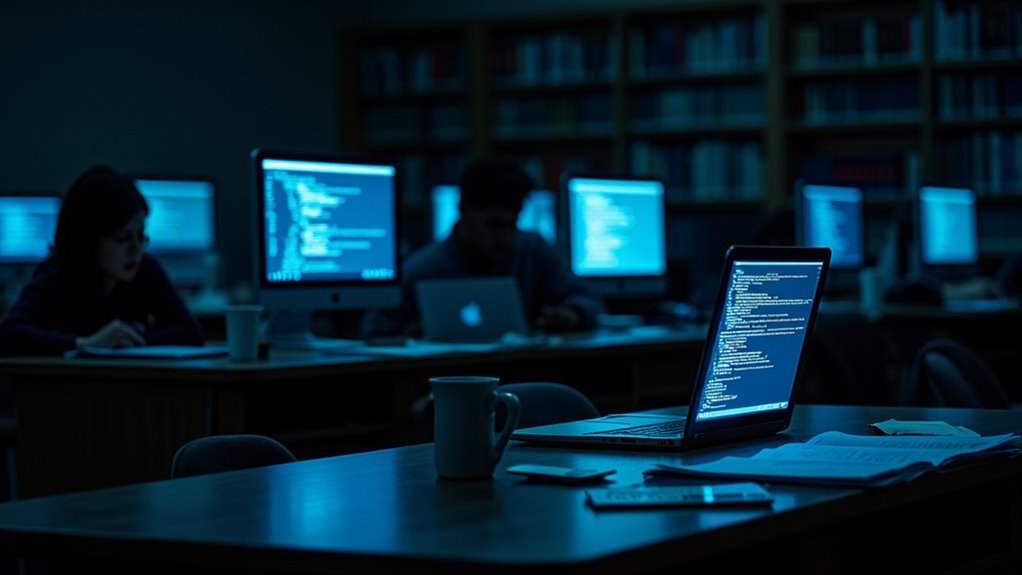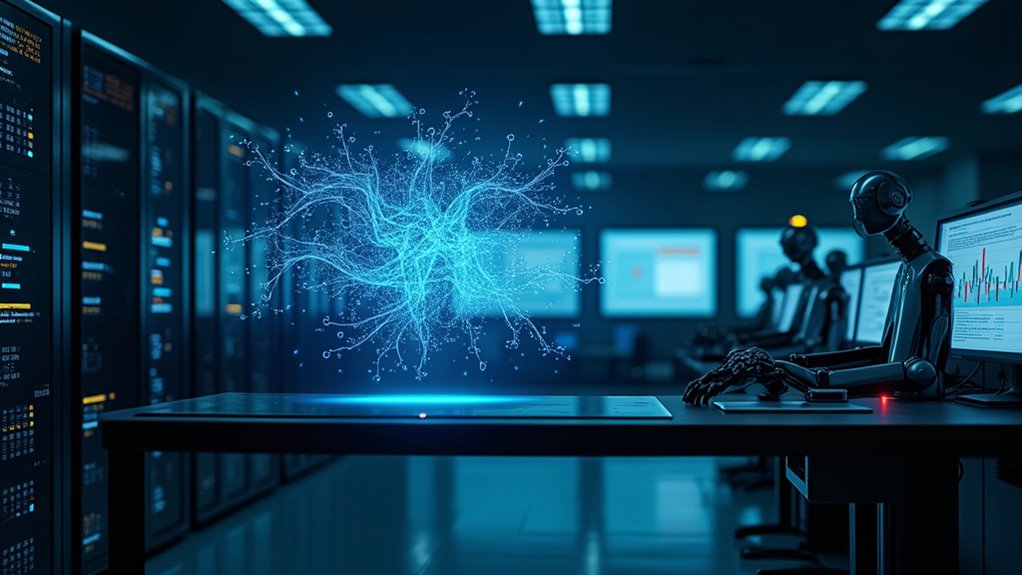While educators have long battled academic dishonesty, the numbers tell a shocking story: more than 60% of university students freely admit to cheating. The reality? That’s probably just the tip of the iceberg. With only 2% of cheaters getting caught, it’s basically a free-for-all in classrooms worldwide.
Academic cheating isn’t just widespread – it’s practically unstoppable, with 60% admitting to it and only 2% facing consequences.
The stats are mind-boggling. High school students? Fifty-nine percent admit to test cheating. College students? Even worse – up to 98% confess to some form of academic misconduct. Heavy workload pressure and tuition costs drive many students to take shortcuts. Recent studies across five diverse institutions have revealed consistent patterns of cheating behavior regardless of school type.
And now, artificial intelligence has crashed the party, making traditional plagiarism detection about as effective as a paper umbrella in a hurricane. Today’s data shows that over 10% of papers contain significant AI-generated content.
This isn’t just about lazy students looking for shortcuts. The pressure to excel is intense, turning academic performance into a pressure cooker of stress and anxiety. Students view cheating as a survival strategy, watching their peers do it and thinking, “Well, if everyone else is doing it…” Classic peer pressure meets academic desperation.
The history of academic dishonesty isn’t new – researchers like Dr. Donald McCabe started documenting these trends back in the 1990s. But today’s cheating methods? They’re light-years beyond passing notes or writing answers on your palm. Students are using unauthorized electronic resources, collaborating on individual assignments, and letting AI write their essays. It’s cheating 2.0, and traditional academic policies are struggling to keep up.
Educational institutions are fighting back, implementing stricter guidelines and fancy detection systems. But here’s the kicker: 68% of students and 65% of faculty agree that plagiarism is cheating, yet it continues unabated. The disconnect between knowing it’s wrong and doing it anyway is staggering.
The global nature of this problem is particularly jarring. It’s not just an American issue – educational institutions worldwide are grappling with this epidemic of academic dishonesty.
And with AI tools becoming more sophisticated by the day, the challenge of maintaining academic integrity is only getting more complex. Welcome to education in the 21st century, where the biggest test might be figuring out who actually did the work.








